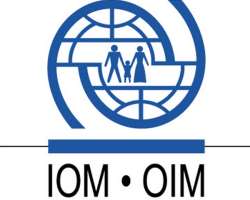Displacement Hits 1.2 Million in Northern and Central Nigeria

GENEVA, Switzerland, March 6, 2015/African Press Organization (APO)/ -- Over 1.2 million people have been displaced in northern and central Nigeria as the Boko Haram insurgency continues to fuel large scale population movement.
Between January 1st and February 23rd 2015, IOM's Displacement Tracking Matrix (DTM) identified 1,188,018 internally displaced persons (IDPs) in the North East Region of Nigeria covering Adamawa, Bauchi, Borno, Gombe, Taraba and Yobe States.
In addition, Nigeria's National Emergency Management Agency (NEMA) has registered 47,276 IDPs in the central parts of the country, which include Abuja, Kano, Kaduna, Nasarawa and Plateau.
This brings the total number of displaced persons identified to 1,235,294 in Northern and Central Nigeria.
While the growing violence perpetrated by Boko Haram remains the lead factor of massive population movement, community clashes and natural disasters are also contributing to internal displacement in some States.
According to IOM's latest DTM report, 92 per cent of the IDPs identified in the region were displaced by the Boko Haram insurgency. The majority (79 per cent) were displaced in 2014, which corresponds to the escalation of violence.
These displacements continue to generate acute humanitarian needs for displaced households living in camps, camp-like settings, or with host families, further eroding the resilience of affected communities.
The vast majority of IDPs live with host families (87 per cent), while 13 per cent live in camps or camp-like settings situated in Adamawa, Borno and Taraba States.
“Following Boko Haram attacks, the majority of IDPs have left their homes without anything and most of them are in dire need of food, shelter, water and basic necessities,” said IOM Nigeria Chief of Mission Enira Krdzalic.
IOM's DTM program, implemented in close collaboration with NEMA, builds the capacity of the State Emergency Management Agency (SEMA), the National Red Cross Society (NRCS) and other partners to undertake IDP assessments in a unified and systematic manner.
The DTM assessments include the collection of baseline information in the six north-eastern States, as well as site assessments conducted in collective centers, camps and transitional centers.
According to the DTM report released on 4th March, 53 per cent of the IDP population in North East Nigeria are women and 47 per cent are men. Also 56 per cent of the total IDP population are children and more than half of them are five years old or younger.
"The DTM provides much-needed data to better target assistance and set priorities in line with needs,” said Krdzalic, “We were able to cover parts of Borno, the most affected state. In addition, the latest release features detailed site profiles for 33 camps and camp-like settings, highlighting gaps in current provision of assistance.”
Besides the 1.2 million displaced in Nigeria, the Boko Haram insurgency has forced displacement of over 200,000 people in neighbouring Cameroon, Chad and Niger.
